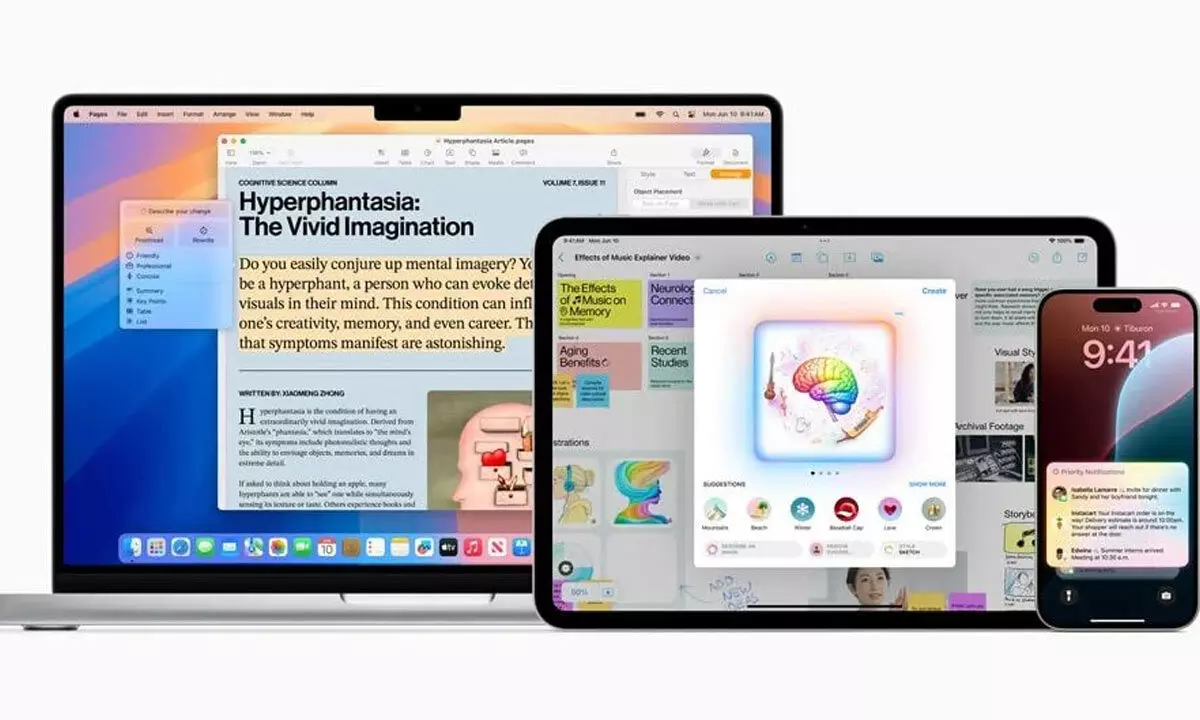
Visualizing healthcare personalization through a blend of human figures and DNA, illustrating the ...
[+] fusion of technology and patient individuality. “What other industry is there where someone's paying high dollar for something that they don't know what they're going to get, where they're emotionally and physically invested, and they don't know if it's going to work? That's the chance of healthcare.” —Molly Luton, chief marketing and communications officer, Ballad Health As I’ve mentioned throughout this series, healthcare isn’t like any other industry.

The challenge Luton mentions is one reason it can be so hard to build trust with people before they’ve ever experienced a provider’s care or services. “If you're booking with Hilton (Hotels), you know what you're getting,” said Luton. “With healthcare, you're trusting another human being to deliver something to you that has yet to be defined, and there might not even be a definition for it if you don't have a diagnosis by the end of your visit.
So the amount of trust that has to happen ...
it’s crucial that we listen, think, feel, and do for the patient first, and use that to then react and build a business.” This is article 12 in a 14-part weekly series, in which I am sharing insights from the 2024 Healthcare in the Age of Personalization Summit . We heard from a wide range of healthcare experts—leaders spanning all facets of healthcare organizations from the boardroom and C-suite to the patient’s bedside.
We covered topics such as why personalization is important , how we can shape our organizational cultures to facilitate it, how to inject personalization into your employer brand , why better care requires honoring individuality , and what CEOs can learn about personalization from nurses [KP1] . In this article I’ll share highlights from the panel discussion about the role of communications and branding in helping healthcare systems earn patient trust. Panelists included: Fed Cuts Interest Rates For First Time In 4 Years: Here’s What It Means For You iOS 18: Apple Just Gave iPhone Users 33 Reasons To Update Now Samsung Rolls Out Major Feature Update To Millions Of Galaxy Phones Help People Understand the System Before They Even Need It Bollinger shared a story most of us can relate to.
Her brother-in-law was in the hospital, and she was there with her sister trying to support and advocate for both her sister and her sister’s husband. “He couldn't communicate,” said Bollinger. “No one ever addressed us as the two people who sat in that room all day, every day.
Finally, I went out and asked for the charge nurse. It was not in my hospital, but it very well could have been.” But not everybody knows who or what to ask for, and that made Bollinger ask herself: “How do we help patients understand in advance, What are the rules? How do you engage? What should you expect? I'm a big believer in setting expectations and then meeting them.
We often don't stop and look at what's happening and say, okay, this is a problem. This family member is alone. No one has talked to them in three shifts.
Why didn't anybody notice?” That brings up a great point: building trust requires much more than communicating a brand identity. It requires starting with a brand identity that embodies trustworthiness. Luton agreed and shared this example.
“We're not marketers in the same sense as the consumer would understand that word,” said Luton. “I look at us as marketing operators. We have to understand the operations.
We have to know how the business is being built. Is the house in order before we put it on the market? If the house is messy and disheveled and the roof's falling off, I'm not going to put it on Zillow.” She said marketing and communications officers are the protectors of the brand, and so they need a seat at the table when it comes to making decisions not just about messaging, but also about how the health system operates—because they bring the consumer voice into the conversation.
“We need to keep pushing and advocating for the patient in a very different way—by bringing their voices together to make change in the operation,” said Luton. “There's nothing more valuable than that. No brand building can be any more valuable than advocating for the patient and what they need.
” But you can’t always change how things are done. People don’t like to wait for test results, but sometimes the wait is unavoidable. What then? “It's about feeling heard,” said Luton.
“If something does, in fact, take five days to get a scan read because of volume, we have to have that two-way communication, saying, ‘ this is what's happening, here's an update, this is what's going on. ’ It’s about understanding how that consumer wants to receive that message and then giving it to them the right way. Don't send them letters in the mail.
We need push notifications. We need an app. We need those kinds of things that audience is going to resonate with.
So it's stopping and learning and listening to what they have to say and adjusting our tools and our function to that audience's need, which is then that piece of personalization. It's giving them what they need.” Speaking of what they need .
.. Healthcare Hasn’t Kept Up with Modern Expectations All companies, in every industry, are always trying to figure out how to appeal to the younger generations.
An organization’s survival depends on its ability to continue growing its customer base, and that depends on building trust with new generations. That’s a challenge, because new generations have their own expectations—and healthcare organizations don’t seem prepared to meet them. One key expectation: “Transparency,” said Bhardwaj.
“They can see a standard message or an AI response from a mile away. You really have to be transparent; you have to do your best to take time and personalize your message. They don't want a standard response.
” Bollinger agreed and extended that beyond communications to include the business model itself. “What we offer today, that generation is not going to buy for very long,” said Bollinger. “The patient's expectations are shaped outside of healthcare.
In any other experience that I have, if I have to call [rather than chat or go online], something has gone terribly wrong. Yet, in healthcare, you have to call for everything. Do we even have an offering that's going to resonate with them, before we even market it? Because what we offer today—call, wait, come in—they’re saying, ‘I'll just go somewhere else where I can just get it immediately.
’” It's Not About What You Want to Say What does it mean for healthcare leadership to stop ruling by standards that don't account for what matters to the individual? Bhardwaj said you have to empower people. “I started my career in hospitality, and a lot of times you empower your teams to make decisions that aren't always standard,” she said. “You have your baseline, we have a lot of compliance that we must stay in, but often there are ways we can [personalize by saying], ‘Hey, how do we help that patient understand what I'm saying?’ Or how do I make a communications plan and provide that feedback to leadership through the eyes of hospitality, empowering our teams and empowering leaders?” Luton also added that we have to use language that resonates.
She said we often build communications plans based on what we want to say, rather than on what people need to hear. “If we don't understand the linguistics of what our patient's needs are and the vernaculars that they use, [the message won’t get through,]” she said. “We can talk about oncology all day long, but they use the word cancer.
If we're trying to use the word oncology in our advertising, and if that's a word they [wouldn’t search or] don't know how to spell, we're not resonating. We're actually alienating ourselves even more and creating a divide.” Bhardwaj circled back to that idea of empowering in the moment, if it seems like a message isn’t getting through.
“We really need to meet patients where they are and empower our teams to say, I don't think that message landed or I don't think that they receive the letter they needed to receive or the reminder that they needed to receive,” said Bhardwaj. “Our employees really are the people who are day-to-day on the ground with our patients. In our communication and in our marketing materials, we need to showcase the fact that we have listened to our employees.
We want to provide a safe place that they can provide that feedback. If there was a gap, we need to be able to say, you know what? We listened and you can tell us, Hey, this isn't working for us. And that's the other cultural shift that has to happen with leaders.
” It's time to stop viewing marketing and communications as a cost center and start seeing us as an integral part of the reinvention and growth strategy. Watch this short video for more from the panel. Next time: Boosting patient experience in the digital era.
.














